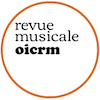-
Vol. 10 nº 1, juin 2023
This article is about the use of phonograph records (and associated technologies, such as the jukebox or turntable) as objects of narrative interconnection in a corpus of low-budget American films of the 1940s. Records, as we shall see, often function in these films as tokens of interconnection which cross the boundaries of gender and race in ways both stereotypical and unexpected. The spinning record, in films of this period, very often served to initiate a film’s movement between spaces whose relationship to each other might be one of intimate familiarity or of radical social alterity. Across several films, as I hope to show, records play pivotal roles in the staging and differentiation of identities. Even in the fictional worlds dominated by men in these films, it is very often women who select, handle, and play records. As objects that sometimes trigger entry into filmic spaces disconnected from those of a film’s main narrative, records can authorize glimpses of racialized populations who otherwise play no role in a film’s dramatic action.
-
Vol. 2 nº 1, janvier 2014
With the release of Hugo in 2011, director Martin Scorsese provided the film audience with a loving look back to a time in cinematic history when the work of French film-makers like the Lumière Brothers and Georges Méliès populated Parisian entertainment venues. This was the world that experienced Méliès’ celebrated Le voyage dans la lune (1902) and Le cake-walk infernal (1903) to the amazement of audiences, the latter featuring a blackface couple negotiating the dance’s steps in the halls of hell. And this was the world that Claude Debussy inhabited, where blackface minstrelsy and the cakewalk danced by African Americans coexisted on stages and film screens.
ISSN : 2368-7061
© 2025 OICRM / Tous droits réservés
